The MPC sets monetary policy to meet the 2% inflation target, and in a way that helps to sustain growth and employment. At its meeting ending on 4 May 2022, the MPC voted by a majority of 6-3 to increase Bank Rate by 0.25 percentage points, to 1%. Those members in the minority preferred to increase Bank Rate by 0.5 percentage points, to 1.25%.
Global inflationary pressures have intensified sharply following Russia’s invasion of Ukraine. This has led to a material deterioration in the outlook for world and UK growth. These developments have exacerbated greatly the combination of adverse supply shocks that the United Kingdom and other countries continue to face. Concerns about further supply chain disruption have also risen, both due to Russia’s invasion of Ukraine and to Covid-19 developments in China.
UK GDP is estimated to have risen by 0.9% in 2022 Q1, stronger than expected in the February Monetary Policy Report. The unemployment rate fell to 3.8% in the three months to February, and is likely to fall slightly further in coming months, consistent with a continuing tightening in the labour market and with a margin of excess demand at present. Surveys of business activity have generally remained strong. There have, however, been signs from indicators of retail spending and consumer confidence that the squeeze on real disposable incomes is starting to weigh on the household sector. The level of GDP is expected to be broadly unchanged in Q2.
Twelve-month CPI inflation rose to 7.0% in March, around 1 percentage point higher than expected in the February Report. The strength of inflation relative to the 2% target mainly reflects previous large increases in global energy and tradable goods prices, the latter of which is due to the shift in global demand towards durable goods and to supply chain disruptions.
The Committee’s updated central projections for activity and inflation are set out in the accompanying May Monetary Policy Report. The projections are conditioned on a market-implied path for Bank Rate that rises to around 2½% by mid-2023, before falling to 2% at the end of the forecast period. Fiscal policy is assumed to evolve in line with announced Government policies. Wholesale energy prices are assumed to follow their respective futures curves for the first six months of the projections and remain constant beyond that, in contrast to futures curves, which are downward sloping over coming years. There are material risks around this assumption.
In the May Report central projection, CPI inflation is expected to rise further over the remainder of the year, to just over 9% in 2022 Q2 and averaging slightly over 10% at its peak in 2022 Q4. The majority of that further increase reflects higher household energy prices following the large rise in the Ofgem price cap in April and projected additional large increase in October. The price cap mechanism means that it takes some time for increases in wholesale gas and electricity prices, and their respective futures curves, to be reflected in retail energy prices. Given the operation of the price cap, consumer price inflation is likely to peak later in the United Kingdom than in many other economies, and may therefore fall back later. The expected rise in CPI inflation also reflects higher food, core goods and services prices.
Underlying nominal earnings growth has risen by more than projected in the February Report and is expected to strengthen in coming months, given the further tightening of the labour market and some upward pressure from higher price inflation. Companies generally expect to increase their selling prices strongly in the near term, following the sharp rises in their costs, with many reporting confidence that they will be able to rebuild at least some of their margins.
Nonetheless, in the May Report central projection, UK GDP growth is expected to slow sharply over the first half of the forecast period. That predominantly reflects the significant adverse impact of the sharp rises in global energy and tradable goods prices on most UK households’ real incomes and many UK companies’ profit margins. Although the unemployment rate is likely to fall slightly further in the near term, it is expected to rise to 5½% in three years’ time given the sharp slowdown in demand growth. Excess supply builds to 2¼% by the end of the forecast period.
With monetary policy acting to ensure that longer-term inflation expectations are anchored at the 2% target, upward pressure on CPI inflation is expected to dissipate over time. Global commodity prices are assumed to rise no further in the central projection, global bottlenecks ease over time, and the weakening in demand growth and building excess supply lead domestic inflationary pressures to subside.
Conditioned on the rising market-implied path for Bank Rate and the MPC’s current forecasting convention for future energy prices, CPI inflation is projected to fall to a little above the 2% target in two years’ time, largely reflecting the waning influence of external factors, and to 1.3% in three years, well below the target and mainly reflecting weaker domestic pressures. The risks to the inflation projection are judged to be skewed to the upside at these points, given the risks of more persistent strength in nominal wage growth and domestic price setting than assumed.
The MPC’s remit is clear that the inflation target applies at all times, reflecting the primacy of price stability in the UK monetary policy framework. The framework also recognises that there will be occasions when inflation will depart from the target as a result of shocks and disturbances. The economy has recently been subject to a succession of very large shocks. Russia’s invasion of Ukraine is another such shock. In particular, should recent movements prove persistent as the central projections assume, the very elevated levels of global energy and tradable goods prices, of which the United Kingdom is a net importer, will necessarily weigh further on most UK households’ real incomes and many UK companies’ profit margins. This is something monetary policy is unable to prevent. The role of monetary policy is to ensure that, as this real economic adjustment occurs, it does so in a manner consistent with achieving the 2% inflation target sustainably in the medium term, while minimising undesirable volatility in output.
Recent developments have exacerbated materially both the near-term peak in CPI inflation, and the prospective negative impact on activity and medium-term inflationary pressures. Nevertheless, given the current tightness of the labour market, continuing signs of robust domestic cost and price pressures, and the risk that those pressures will persist, the Committee voted to increase Bank Rate by 0.25 percentage points at this meeting.
Based on their updated assessment of the economic outlook, most members of the Committee judge that some degree of further tightening in monetary policy may still be appropriate in the coming months. There are risks on both sides of that judgement and a range of views among these members on the balance of risks. The MPC will continue to review developments in the light of incoming data and their implications for medium-term inflation.
The Committee reaffirms its preference in most circumstances to use Bank Rate as its active policy tool when adjusting the stance of monetary policy. As Bank Rate is now being increased to 1%, and consistent with the MPC’s previous guidance, the Committee will consider beginning the process of selling UK government bonds held in the Asset Purchase Facility. The Committee reaffirms that the decision to commence sales will depend on economic circumstances including market conditions at the time, and that sales would be expected to be conducted in a gradual and predictable manner so as not to disrupt the functioning of financial markets. The Committee recognises the benefits of providing market participants with clarity on the framework for any potential sales programme. The Committee has therefore asked Bank staff to work on a strategy for UK government bond sales, and will provide an update at its August meeting. This will allow the Committee to make a decision at a subsequent meeting on whether to commence sales.
Minutes of the Monetary Policy Committee Meeting ending on 4 May 2022
1: Before turning to its immediate policy decision, and against the backdrop of its latest economic projections, the Committee discussed: the international economy; monetary and financial conditions; demand and output; and supply, costs and prices.
The International Economy
2: The economic consequences of the Russian invasion of Ukraine had started to be felt globally. From already elevated levels, increases in the prices of energy and other commodities since the start of the war had put further upward pressure on producer and consumer price inflation, weighing on real incomes. Concerns around supply chain bottlenecks had also risen, owing both to the war in Ukraine and to Covid-19 (Covid) developments in China. These developments were consistent with a deterioration in the outlook for global growth. UK-weighted global GDP was expected to grow only slightly in 2022 Q2, materially slower than had been anticipated at the time of the February Monetary Policy Report.
3: European economies were expected to be particularly affected by the war in Ukraine given their dependence on energy imports. Euro-area GDP was expected to grow only a little in 2022 Q2, at a rate significantly lower than had been anticipated in the February Report, following growth of 0.2% in Q1 according to the preliminary flash release. In the first quarter, the economic impact of the Omicron variant had been somewhat less than had been anticipated in the February Report, and indicators suggested that services activity had continued to expand into the second quarter as Covid restrictions had eased. Nonetheless, the war in Ukraine had weighed on growth prospects, particularly in the manufacturing sector, with output PMIs declining in April. Forward-looking indicators of business expectations and consumer confidence had also weakened significantly since the invasion. The outlook for Central and Eastern European countries had worsened, and their currencies had depreciated relative to the US dollar since the MPC’s last meeting, partly reflecting the strength of their trade linkages with Russia. Ukraine’s economic output was expected to decline materially as a direct consequence of the war. The Russian economy was also expected to contract significantly this year.
4: According to the advance estimate, US GDP had contracted by 0.4% in 2022 Q1, driven primarily by a widening of the trade deficit and weak inventory investment. Although this was weaker than had been anticipated in the February Report, underlying demand, namely personal consumption and gross private fixed investment, had remained strong in the first quarter, and spending had continued to rotate back towards services from goods. As a net exporter of oil and with retail gas prices having not risen by as much in absolute terms as in Europe, the US economy was expected to be relatively less affected by developments in commodity prices, albeit not fully shielded, and GDP was expected to expand reasonably strongly in the second quarter. The US labour market had remained tight, with the unemployment rate falling to 3.6% in March, close to pre-Covid levels. Wage growth had continued to rise, according to the Federal Reserve Bank of Atlanta’s measure.
5: China had been experiencing a significant outbreak of Covid cases, against an already challenging economic backdrop, including stresses in the property sector. The authorities had imposed lockdowns in a number of large cities, including Shanghai, in late March. As a result of these developments, China’s GDP was expected to grow more slowly in 2022 Q2 than had been anticipated in the February Report, by 0.8%. This would also be weaker than in Q1, when GDP had grown by 1.3%. Consistent with the Chinese authorities’ approach to supporting manufacturing during Covid outbreaks, for example through closed-loop production systems in which workers remained on factory sites, industrial production growth had fallen by less than retail sales growth in March. Some ports in affected cities had experienced congestion and there had been widespread reports of delays to road freight, adding to global supply chain pressures. Although delays had started to ease, further disruptions were possible over the coming months.
6: Supply chain constraints had also arisen due to Russia’s invasion of Ukraine, intensifying global cost pressures. Russia and Ukraine were major producers of many inputs, ranging from metals and food to fertilisers, as well as oil and natural gas. The war had led to broad increases in commodity prices, although some had fallen back from their peaks over recent weeks. The spot price of Brent crude oil had increased by around 25% to $106 per barrel since the February Report.
7: European gas prices had risen sharply following the invasion, before moderating. Russia’s decision to cease gas flows to Poland and Bulgaria in late April had led to a short-lived increase in the Dutch Title Transfer Facility (TTF) spot price, which now stood at around €100 per MWh, broadly the same level as at the MPC’s March meeting and around 20% higher than at the time of the February Report. The TTF futures curve remained at around this level for just under a year before declining notably. A wedge had opened up between the TTF and UK spot gas prices, with UK contracts trading at a lower level of around €65 per MWh, or 160 pence per therm. This was due to large liquefied natural gas (LNG) shipments to the United Kingdom, alongside a rebound in output from Norwegian gas fields and seasonally warmer weather. This wedge persisted in the futures curve for about six months, at which point the UK futures price rose to the TTF futures price as LNG shipments to the UK were expected to be more in line with capacity to re-export to the European Union.
8: Over recent weeks, metals prices had fallen to levels a little above those at the time of the February Report in aggregate, although the prices of some metals such as nickel and zinc had remained elevated. Food prices, including wheat and corn, had remained substantially higher than at the time of the February Report.
9: Against this backdrop of strong commodity prices, global consumer price inflation had continued to rise. In the euro area, annual HICP inflation had increased to 7.5% in April, with core inflation at 3.5%. In the United States, annual CPI inflation had risen to 8.5% in March, with core inflation at 6.5%, while headline PCE inflation had increased to 6.6%. Much of the increase in US CPI inflation had been due to higher contributions from energy prices, but core goods and services components had continued to make the largest contributions to the inflation rate. In the euro area, energy prices had been the main contributor to inflation, although core inflation had risen sharply in April. Measures of inflation expectations had generally increased in advanced economies, in particular at shorter horizons.
10: The Committee discussed the risks around the global inflation outlook, and the implications for growth. There was an upside risk to the future path for energy prices, particularly gas prices, for example if flows of Russian gas to large euro-area countries slowed significantly. Under such a scenario, European gas prices would be likely to increase sharply and gas quantities could be rationed going into next winter as EU gas stocks might run low. There was also an upside risk to inflation from further price pressures related to global supply chain disruptions. Additional constraints affecting transportation capacity, inputs to industrial processes and agricultural production were possible, both owing to the war in Ukraine and if there were further severe Covid outbreaks in China. Set against the backdrop of continuing strong US consumer demand, this could generate further increases in core goods prices, although lower demand from China could reduce commodity prices at the margin. Finally, there was a risk that tight labour markets and strong wage growth, coupled with higher inflation expectations, could lead to further inflationary pressures in advanced economies. Additional price pressures could lead to a further deterioration in the global growth outlook as real incomes were squeezed, reducing consumer spending and exacerbating the policy challenges facing central banks around the world.
Monetary and Financial Conditions
11: Since the MPC’s previous meeting, advanced-economy government bond yields had risen significantly and by more in the United States and in the euro area than in the United Kingdom. Ten-year yields had increased by around 80 basis points in the United States, 65 basis points in the euro area and 35 basis points in the United Kingdom.
12: The near-term path for market-implied policy rates in the United States had risen significantly since the MPC’s previous meeting. At its March meeting, the Federal Open Market Committee had increased the target range for the federal funds rate to 0.25-0.50% and had given an indication that the Committee was well placed to begin the process of reducing the size of the Federal Reserve’s balance sheet as early as May and at a quicker pace than during the 2017-19 episode of balance sheet reduction. The market-implied policy rate in the United States reached 2.8% by end-2022 and peaked at around 3.4% in 2023. In the euro area, the near-term market-implied path for policy rates had also risen since the MPC’s previous meeting. At its meeting on 14 April, the ECB Governing Council had left its key policy interest rates unchanged and had noted that recent data had reinforced its expectation that net asset purchases should be concluded in the third quarter of 2022.
13: In the United Kingdom, market pricing was consistent with an increase in Bank Rate of 0.25 percentage points, to 1% at this MPC meeting, and market-implied expectations for the path of Bank Rate had risen further out. The May Monetary Policy Report was conditioned on a market-implied path for Bank Rate, based on the 15-working day average to 26 April, that rose to around 2% by end-2022, peaked at 2.6% in 2023 and then fell back to around 2% in three years’ time. The results of the Bank of England’s Market Participants Survey had indicated broadly similar expectations for Bank Rate in the near term, with almost all respondents expecting a 0.25 percentage point increase at this meeting. Respondents expected a much lower central path for Bank Rate than the market-implied path further ahead, albeit a significant number of respondents viewed the balance of risks around that path as being skewed to the upside rather than to the downside over the next two years, reconciling at least in part the difference with market-implied expectations.
14: Short-term financial market inflation compensation measures in the United Kingdom had increased since the MPC’s previous meeting, in part reflecting the continued impact of Russia’s invasion of Ukraine on gas and other energy prices. At the same time, medium-term inflation compensation measures in the United Kingdom had fallen modestly, but they had remained above their levels at the time of the February Report and above their average levels of the past decade. Intelligence gathered from market contacts, suggested that higher inflation expectations and greater perceived upside risks to inflation might have in part accounted for these above-average levels of medium-term inflation compensation measures, alongside other factors.
15: The US dollar effective exchange rate had appreciated by around 2% since the MPC’s March meeting, as interest rate differentials had widened. The sterling effective exchange rate had depreciated by around 1%, while the euro effective exchange rate had remained broadly unchanged.
16: US and euro-area equity prices had been broadly unchanged since the MPC’s previous meeting. The FTSE All-Share index had increased to levels seen prior to the invasion of Ukraine, but the UK-focussed FTSE index, which had been less supported by the rise in energy prices, had remained below levels seen prior to the invasion. There had been less adjustment in the corporate bond market.
17: UK bank lending rates on mortgages with loan-to-value (LTV) ratios at or below 75% had risen further since the MPC’s previous meeting. This was broadly consistent with a lagged response to the increases in risk-free rates since the autumn of 2021. Lending rates on higher LTV mortgages and sight deposit rates had also started to increase. The further increases in risk-free rates that had occurred since the March MPC meeting would be expected to feed through to mortgage rates in due course. Interest rates on unsecured household borrowing, such as credit cards and personal loans had, as usual, been less sensitive to changes in reference rates.
 Lagos, NG • GMT +1
Lagos, NG • GMT +1











 290 views
290 views

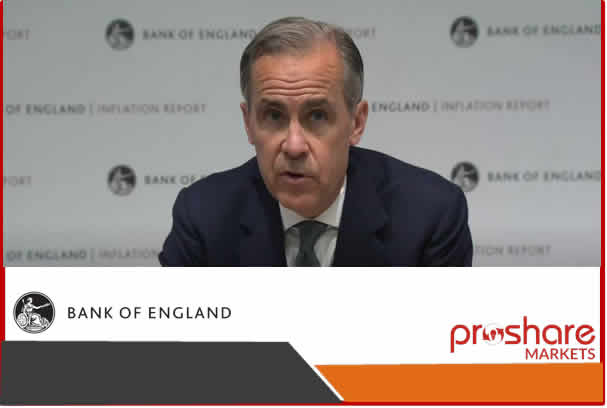
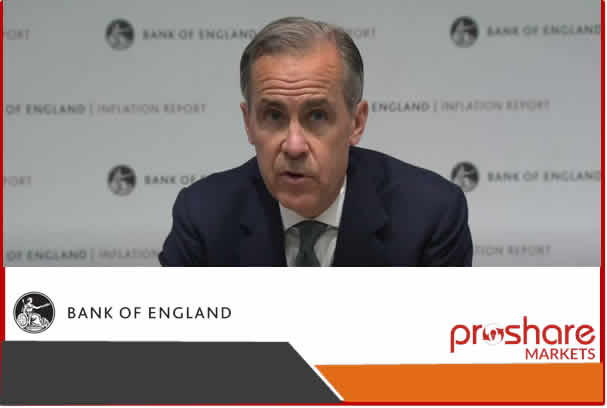
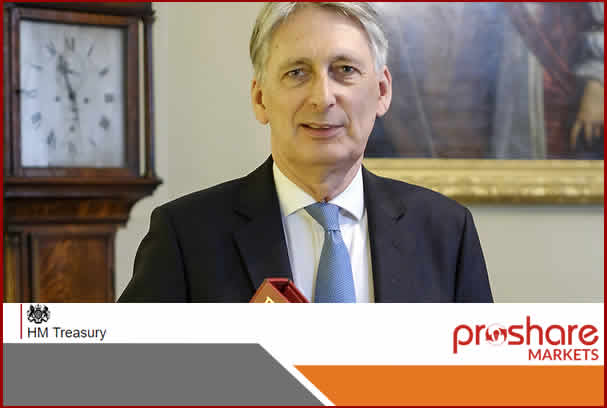
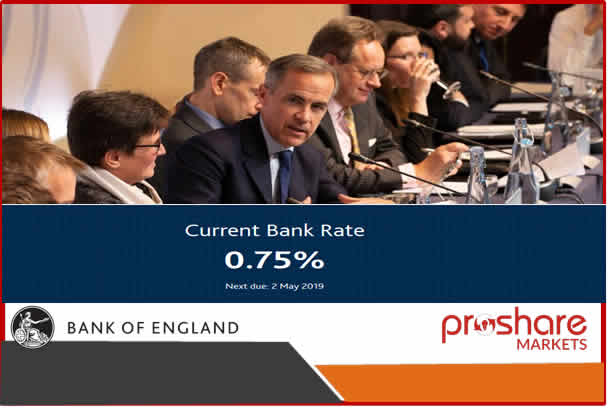
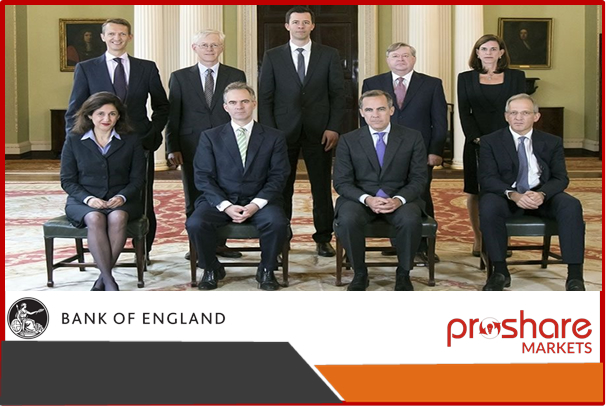
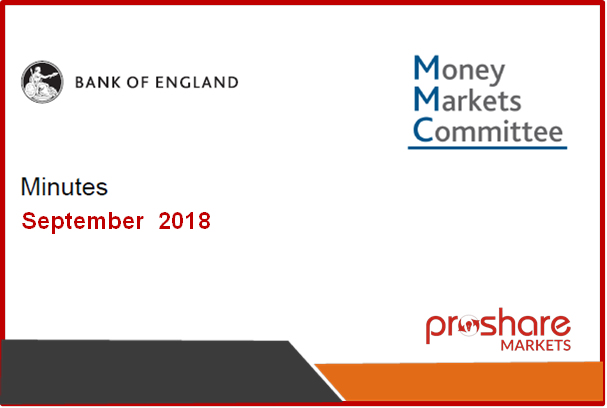

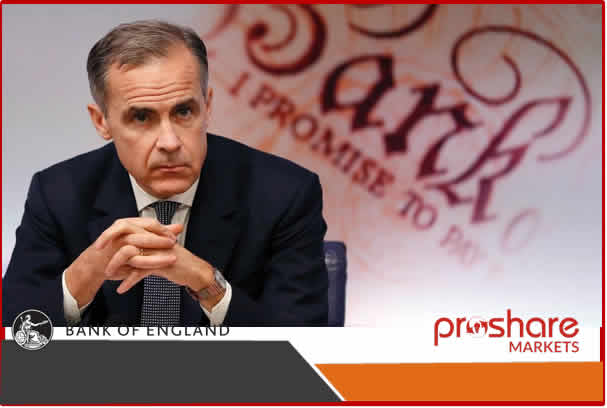






 Sponsored Ad
Sponsored Ad
 Advertise with Us
Advertise with Us









